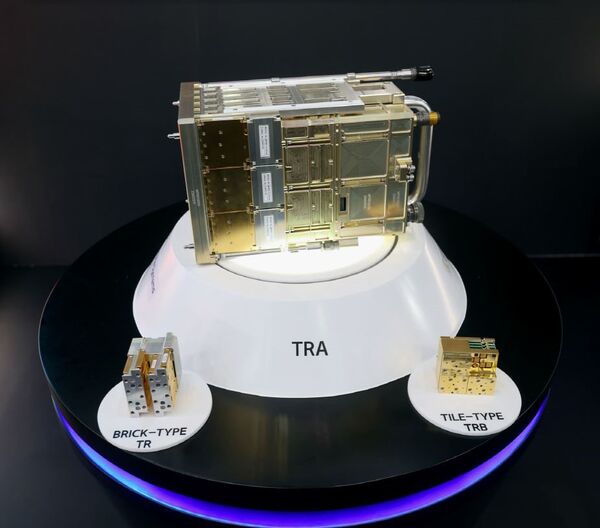
A model showing Hanwha Systems' brick-type TRB and tile-type TRB. Hanwha Systems' air-cooled AESA radar for UAVs will be made up of tile-type TRBs, which have 50% less volume compared with brick-type TRBs. (Hanwha Systems)
South Korea's Agency for Defense Development (ADD) has selected Hanwha Systems as the preferred bidder for a project to develop active electronically scanned array (AESA) radars for unmanned aerial vehicles (UAVs).
Under the project, Hanwha Systems will develop an air-cooled AESA radar for UAVs that will be operated in conjunction with the KF-21 Boramae 4.5-generation fighter aircraft, the company said in a media release on 11 June. The KF-21 is currently being developed by Korea Aerospace Industries (KAI) in collaboration with PT Dirgantara Indonesia for the air forces of South Korea and Indonesia.
The AESA radar will enable the UAVs to simultaneously detect and track targets in the air, land, and sea, Hanwha Systems said.
Air-cooled AESA radars do not require additional cooling equipment. This enables them to be lighter in weight and have reduced volume compared with existing liquid-cooled AESA radars, the company added.
According to Hanwha Systems, the new AESA radar will also be made of “tile-type transmit-receive blocks (TRBs)”, which have been built by “compressing the existing brick-type TRBs”. The volume of a tile-type TRB is 50% less compared with a brick-type TRB, making it possible to reduce the size of an AESA radar while maintaining its performance.
In addition, tile-type TRBs can facilitate a more uniform cooling of the AESA radar compared with brick-type TRBs. The cooling helps the radar reach its desired power output, leading the system to have enhanced surveillance and detection capabilities.
Looking to read the full article?
Gain unlimited access to Janes news and more...







